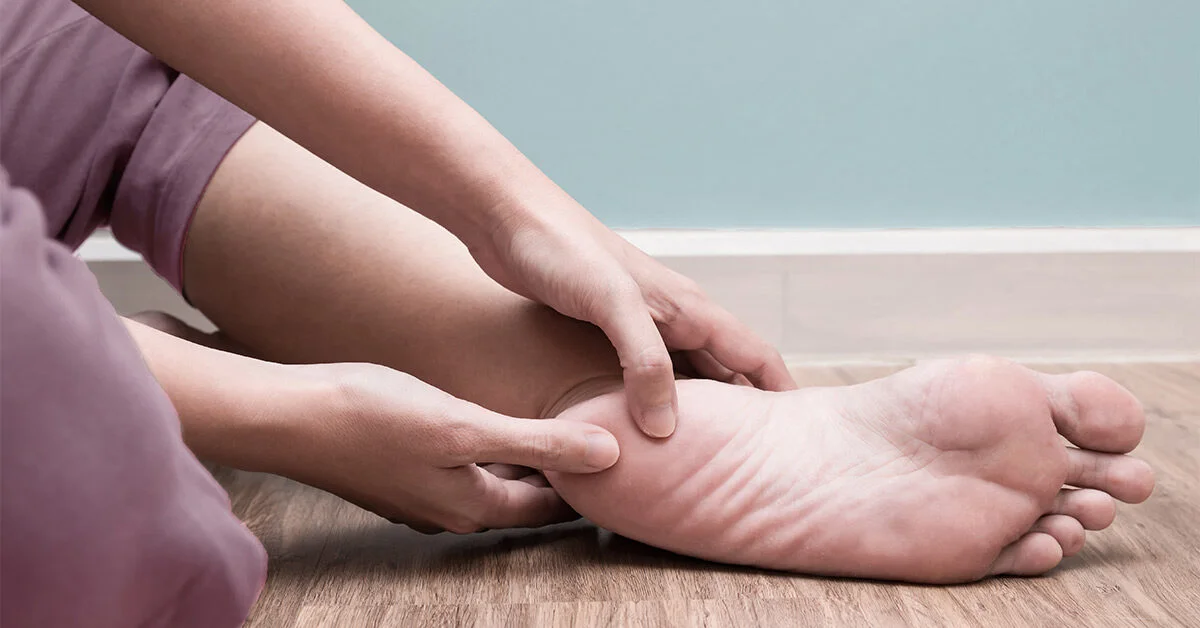Heel Pain: A Cause for Concern, But Not Always Cancer
Heel pain is an incredibly common complaint, affecting millions of people worldwide. It can range from a mild nuisance to a debilitating condition, significantly impacting daily activities. While most often attributed to benign causes, heel pain can occasionally be a symptom of an underlying serious condition, including cancer. This article explores the various causes of heel pain, delves into the rare link with cancer, and offers guidance on when to seek medical attention.
A Multitude of Culprits: Common Causes of Heel Pain
The heel bone, also known as the calcaneus, is the largest bone in the foot and plays a crucial role in weight distribution and shock absorption during walking and running. Several factors can contribute to heel pain, and the specific location of the pain can often provide clues to the underlying cause. Here’s a breakdown of some common culprits:
- Plantar Fasciitis: This is the most frequent cause of heel pain, characterized by inflammation of the plantar fascia, a thick band of tissue running along the sole of the foot and connecting the heel bone to the toes. Pain is typically felt at the bottom of the heel, especially upon taking the first steps in the morning or after periods of inactivity.
- Achilles Tendinitis: This condition involves inflammation of the Achilles tendon, a large tendon connecting the calf muscles to the heel bone. Pain is usually felt at the back of the heel, often worsening with activity.
- Heel Spurs: These are bony protrusions that develop on the underside of the heel bone. They can irritate the surrounding tissues and cause pain, particularly when putting pressure on the heel.
- Plantar Fasciitis Rupture: In rare instances, the plantar fascia can tear, leading to sudden and sharp pain in the heel.
- Bursitis: Bursae are fluid-filled sacs that cushion bones, tendons, and muscles from friction. Inflammation of the bursa located at the back of the heel can cause pain and tenderness.
- Stress Fracture: Tiny cracks in the heel bone can occur due to repetitive stress, particularly in athletes or individuals participating in high-impact activities.
- Nerve Compression: Compression of nerves in the foot can lead to pain, numbness, and tingling in the heel.
- Arthritis: Degenerative joint conditions like osteoarthritis can affect the joints in the foot, including the heel joint, causing pain and stiffness.
The Shadowy Suspect: Heel Pain and Cancer
While rare, cancer can sometimes manifest as heel pain. Here’s why it’s crucial to be aware of this connection, although the likelihood remains low:
- Bone Tumors: Primary bone tumors in the heel bone are exceptionally uncommon. However, secondary cancers, where cancer spreads from another part of the body to the bones, can occasionally affect the heel. Cancers of the lung, breast, prostate, and kidney are some examples that can metastasize to the bones.
- Bone Cysts: These are noncancerous fluid-filled cavities that can develop in the bone, including the heel bone. In rare instances, a large cyst can put pressure on surrounding structures and cause pain.
When to Seek Medical Attention: Not Every Ache Needs a Doctor
Heel pain can often be managed with self-care measures like rest, ice application, stretching exercises, and over-the-counter pain relievers. However, seeking professional medical advice is crucial in certain situations:
- Persistent pain: If your heel pain persists for more than a few weeks despite home remedies, it’s important to consult a doctor for proper diagnosis and treatment.
- Severe pain: Sudden and intense heel pain that makes it difficult to walk warrants immediate medical attention.
- Swelling or redness: Swelling, redness, or warmth around the heel can indicate inflammation or infection and requires a doctor’s evaluation.
- Numbness or tingling: Numbness or tingling sensations in the heel can be a sign of nerve compression and need medical investigation.
- Known risk factors: If you have a history of cancer or other health conditions that can contribute to heel pain, consulting a doctor is advisable.
Diagnosis and Treatment: Getting to the Root of the Problem
A doctor will typically conduct a physical examination of the foot and ankle, inquire about your medical history and activity level. Imaging tests like X-rays, ultrasounds, or MRIs might be ordered to visualize the bones, soft tissues, and identify the source of the pain.
Treatment for heel pain depends on the underlying cause. Here are some common approaches:
- Rest and Activity Modification: Reducing activities that aggravate the pain is often the first line of defense.
- Pain Medication: Over-the-counter pain relievers like ibuprofen or acetaminophen can help manage discomfort.

